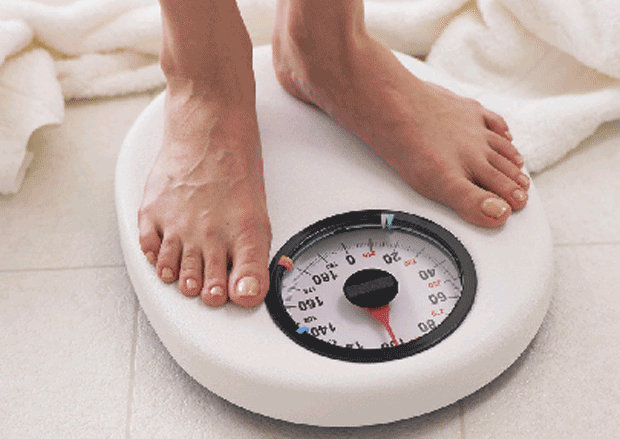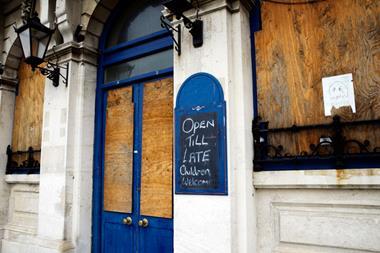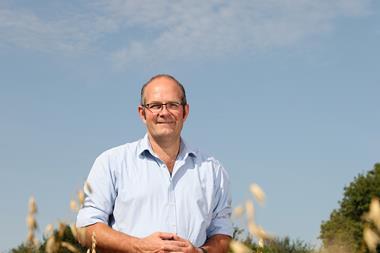It has been something of a fruit cocktail for the fresh produce industry this year: some good bits, some bad bits and plenty of colour. For instance, consumers spent more on fruit and veg than ever before, but volume sales fell. Eat in Colour was launched to promote fruit and veg to consumers, but it failed to attract the industry support it wanted.
At first glance, headline sales were positive. In the year to 25 March, they rose 5.2% to £7.61bn [TNS], with growth in most key categories. But overall volumes of fruit and veg sold fell 1.3%. And despite many healthy eating campaigns, from 5-a-day to Eat in Colour, people are still only getting, on average, 2.6 portions of fruit and veg per day.
So what's eating the sector? Well, retail price rises are the obvious reason for the overall sales increase. National Statistics reported in April that vegetable prices, including potatoes, had risen an average of 15% over the past 12 months. Fruit was up by a more modest 1.3% - well below inflation.
That's because last year's scorching summer damaged many vegetable crops across Europe and created shortages. It also left the ground baked, so growers struggled when they went to plant new crops for the 2007 harvest. Add to the 2006/2007 shortages the usual range of unseasonal frosts (Poland), damaging rains (Spain) and predicted water shortages in southern Europe this summer and you have a recipe for high prices, particularly on organic lines.
But the consumption per capita figures are being questioned by the Fresh Produce Consortium's Nigel Jenney. He says Defra's Family Food Survey showed fruit and veg consumption rose nearly 8% to 2.45kg per person per week last year. "The feedback from government is that consumption is increasing," says Jenney. "TNS is a snapshot of a broad range of families' home consumption - Defra figures show a different
picture."
Breaking down the headline figures, vegetable sales grew 5.3% in value - slightly ahead of total produce. Sales of pre-packed products dominate, with only 28% by value sold loose. Though volume has declined, spend is up because pre-packed vegetables usually command a higher retail price.
They also drive consumption, says TNS analyst Tom Hogg. "Pre-packed vegetables prompt significantly larger trip sizes," he says. "The average is 1.9kg, which is almost twice the size of that for loose vegetables and equates to an average spend per trip of almost £1 more."
Despite these larger baskets, TNS says prepacked is also purchased more than ten times more frequently than loose by the average shopper. Asda says this doesn't undermine its trial to save packaging waste by selling more fresh produce lines loose. The trial was launched at its Southport store in February and has proven such a success that the retailer is extending the scheme to another four stores - two in Cambridgeshire and two in Yorkshire.
"The volume of produce sold in Southport is up slightly since the trial began - there has been no detrimental impact," said an Asda spokesman. "We've extended the trial and, if it proves a success, we'd look to roll it out more widely."
Packaging initiatives are gathering pace across the retail sector, with M&S pledging to cut packaging waste and switch more into recyclable and compostable packaging. Sainsbury's, too, says it is using compostable packaging on its organic lines and Morrisons is improving the information it gives to shoppers on recycling packaging.
Fruit sales also rose strongly, albeit slightly slower than vegetables, at 4.9%. True, sales of bananas - the most popular single SKU - fell 1.5% last year. But that was mainly on the back of the Asda-led price war, which cut the price of a kilo from 85p to 68p; a war that has erupted again this year. But at £593m, banana sales were only pipped by apples (£692m) as the nation's favourite fruit.
With shoppers inspired by TV cookery programmes, exotics grew 6.3% to post sales of £333m, but this impressive growth was outstripped by the soft fruit category. Strawberries and raspberries put on 8.1% to hit sales of £1.32bn. TNS says these two categories combined have driven an increase in the number of trips to the shops made by the average consumer. Soft fruits are contributing high average spend to the category.
The achievement of soft fruits is all the greater considering the volume sold on promotion fell 3% last year, TNS says. But Berryworld MD Adam Olins says promotion is not necessarily on the wane. It is just harder to spot because of larger pack sizes. "The larger pack weight makes it look as if nothing has been sold on promotion when it has. But larger packs are good for the industry because berries get better exposure on shelves and need less packaging."
Strawberries already retail in 450g packs, raspberries are creeping up towards the 250g mark and blueberries will follow, Olins says.
Health continues to be the main reason why people eat fruit. Last year more than 62% of shoppers said they chose fruit for their health compared with less than 55% the year before. This has boosted sales of organic produce by 9.1% to hit £259m. That growth has slowed in comparison with recent years, but household penetration is up by 278,000. This paints a picture of falling organic prices in this sector and broadening popularity.
Ben Raskin, technical manager at the Soil Association, says costs are falling under supermarket pressure and as larger growers move into organic. But the main problem is still a dearth of organic growers in the UK.
"There are so many little growers, you'd never get the same market stability as has been achieved in dairy," Raskin added
It looks as if the next 12 months will be another cocktail of good and bad news for the fruit and veg industry. Another year of weather-induced high prices may limit volume growth in 2007. And retailers are still trying to make local and organic produce more affordable. But at least fruit and veg is on the right side of the health debate. n

















No comments yet